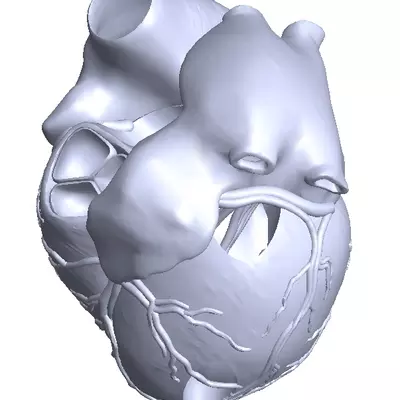- AdventHealth

At the Nicholson Center, we provide medical practitioners and device teams with a unique hands-on approach to robotic surgery training, cadaver labs and more. With medical technology companies continuing to place an emphasis on developing more advanced robots to assist in surgery, our chief technology officer, Dr. Roger Smith, is always keeping an eye on the latest trends in medtech community. After exploring more than 40 robotic surgical devices in his Robot-of-the-Day (ROTD) feature on LinkedIn, Dr. Smith recently identified six motivations explaining why companies and investors are committed to a future of robotic surgery.
FIDELITY
Robots like the da Vinci Surgical System are used to aid the surgeon’s precision and stability during surgery. The da Vinci Surgical System features tiny wristed instruments that are able to address tissue at a much finer resolution than the unaided human hand. When coupled with the robot’s image magnification and hand-to-instrument motion scaling, these precise movements seem to be much larger and smoother than they actually are. The robot also uses tremor filtering to remove small unintended tremors in the surgeon’s hands, so those tremors do not appear as much larger instrument movements during the surgery.
ACCURACY
Robotic systems like the Mazor X and Stryker Mako are guided by patient anatomy scans and a programmed plan of the surgery. With the aid of the robot, the actions performed by the human surgeon are guided such that they follow the plan precisely, removing any unplanned variations that would reduce the outcome of the procedure for the patient. With the robot’s help pedicle screws in the spine (Mazor) are placed exactly as planned, and bone removal for hip or knee implants (Mako) are exact fits for the prosthetic implant that will be used.
SAFETY
In manual Percutaneous Coronary Intervention (PCI), there is a high level of exposure to radiation that is potentially dangerous to the doctors and nurses assisting in the procedure. Robotic devices, similar to the CorPath GRX, allow the surgeon and OR team to perform their functions from outside of the radiation field, reducing the long-term damages from radiation exposure. This also allows them to work without wearing heavy lead jackets that lead to career ending spinal nerve injuries. Robots also allow a surgeon to work from an ergonomically proper position, eliminating the muscle and nerve stresses that come from leaning over a patient on an OR bed when providing service.
LESS INVASIVE
The CyberKnife Robotic Radiosurgery can address cancer tumors without requiring surgical incisions. It uses computer and robotically controlled focused energy to kill cells inside the body without ever cutting through the surface of the skin. The EDAP TMS system uses this same concept to steer high frequency ultrasound to kill cancerous tissue in the prostrate.
EFFICIENCY
The adoption of complex new technologies always requires changes in the processes for applying it. Experiences with surgical robots has proven that to be true for these as well. However, once processes are aligned with the capabilities of the device and surgeons master the new technology, they report that they are able to deliver care more efficiently than using the older methods. This means the advantages listed above can be delivered to more patients in a shorter period of time, and that surgeons experience less mental and physical fatigue in the process.
NATIONAL INTEREST
Recently, scientists in South Korea developed and reveals the Revo-I robot which has all of the appearances of the da Vinci robot. The country’s ministry of health released a statement which made it very clear that the objective of the device was to reduce dependence on USA-based robots, as well as the significant loss of funds required to import these into the country. This robot is meant to make the device more accessible to the citizens of the host country and to reduce the negative impacts of expensive imports.
As the Nicholson Center continues to be a leader in bioskills training, we believe it’s important to keep a pulse on the surgical robotics industry as a whole. Follow Dr. Smith’s ROTD feature to stay up-to-date on the latest in surgical robots.



